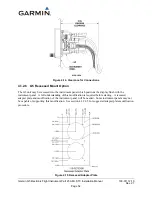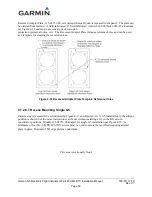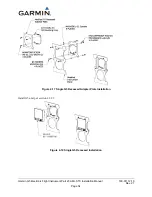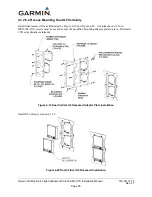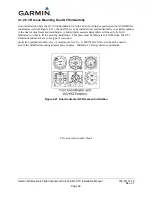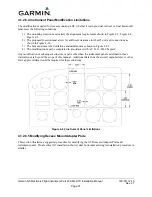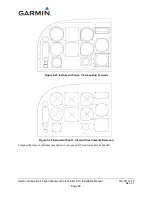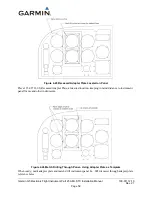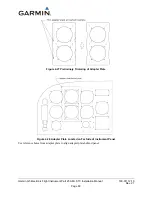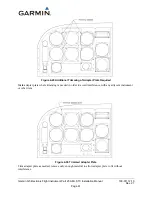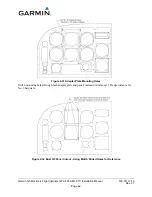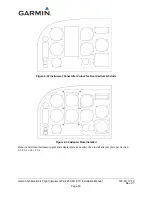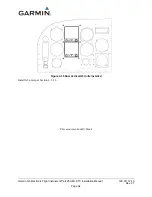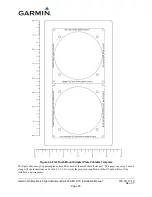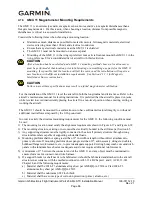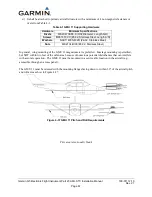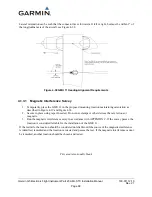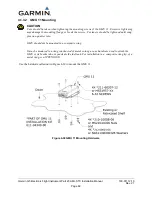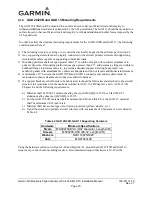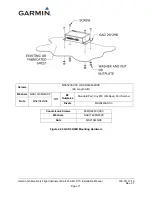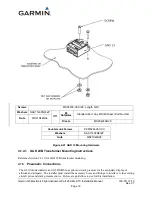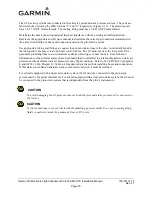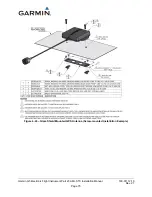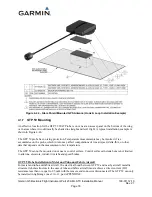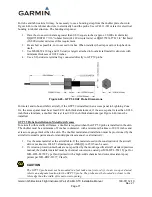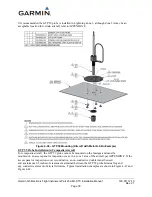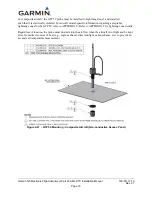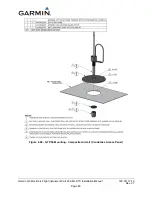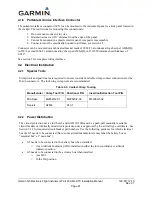
Garmin G5 Electronic Flight Instrument Part 23 AML STC Installation Manual
190-01112-10
Rev. 21
Page 66
4.1.3
GMU 11 Magnetometer Mounting Requirements
The GMU 11 is an extremely sensitive magnetic sensor, more sensitive to magnetic disturbances than a
flux gate magnetometer. For this reason, when choosing a location, distance from possible magnetic
disturbances is critical to a successful installation.
Consider the following items when choosing a mounting location:
•
Maintain as much distance as possible from electric motors, ferromagnetic materials, electrical
devices drawing more than 100 mA and electrical conductors
•
Ensure that any electrical conductor near the GMU 11 is shielded
•
The GMU 11 must not be mounted on an access panel
•
Mounting of the GMU 11 in the wing is preferred. Some aircraft cannot mount the GMU 11 in the
wing, reference 0 for a consolidated list of aircraft with this restriction.
CAUTION
After a location has been selected and a GMU 11 mounting method chosen, a location survey
must be performed at that location prior to fabricating or assembling any parts for the GMU 11
mounting. It is possible that the location will fail the survey and the installation will require a
new location, with different installation requirements. See Section 4.1.3.1 for Magnetic
Interference Survey instructions.
CAUTION
Failure to meet these specifications may result in a failed magnetometer calibration.
For the installation of the GMU 11 level the aircraft in both the longitudinal and lateral axes. Refer to the
aircraft’s maintenance manual for leveling instructions. It is preferred that the aircraft is placed on jacks
while leveled to avoid inadvertently placing the aircraft in a non-level position when entering, exiting or
working the aircraft.
The GMU 11 should be mounted to a surface known to have sufficient structural integrity to withstand
additional inertial forces imposed by the 0.26-pound unit.
In order to satisfy the structural mounting requirements for the GMU 11, the following conditions must
be met:
1)
The mounting location must satisfy the alignment requirements shown in Figure 4-37 and Figure 4-38
2)
The mounting structure, existing or new, must be electrically bonded to the airframe per Section 4.5.
3)
Any supporting structure must be rigidly connected to the aircraft primary structure through strong
structural members capable of supporting substantial loads.
4)
Mounting platform shall not span greater than 12" in width or length without direct attachment to
primary structure. If mounting platform does span greater than 12", add necessary stringers, doublers,
bulkhead flange reinforcements, etc., to provide adequate support. Existing honeycomb core sandwich
panels with aluminum face sheets are adequate and do not require additional reinforcement.
5)
A minimum of 3" between the connector end of the GMU 11 and any object must be maintained to
ensure clearance for connector and wire harness.
6)
If a support bracket or shelf needs to be fabricated, it should be fabricated and attached to the aircraft
structure in accordance with the methods outlined in AC43.13-2B Chapter 1 and 2, AC43.13-1B
Chapter 4, and the following requirements:
a)
Material shall be 2024-T3 aluminum alloy sheet per AMS-QQ-A-250/4 or Clad 2024-T3
aluminum alloy sheet per AMS-QQ-A-250/5.
b)
Material shall be minimum 0.032 inch thick.
c)
Material shall have some type of corrosion protection (primer, alodine, etc.)

